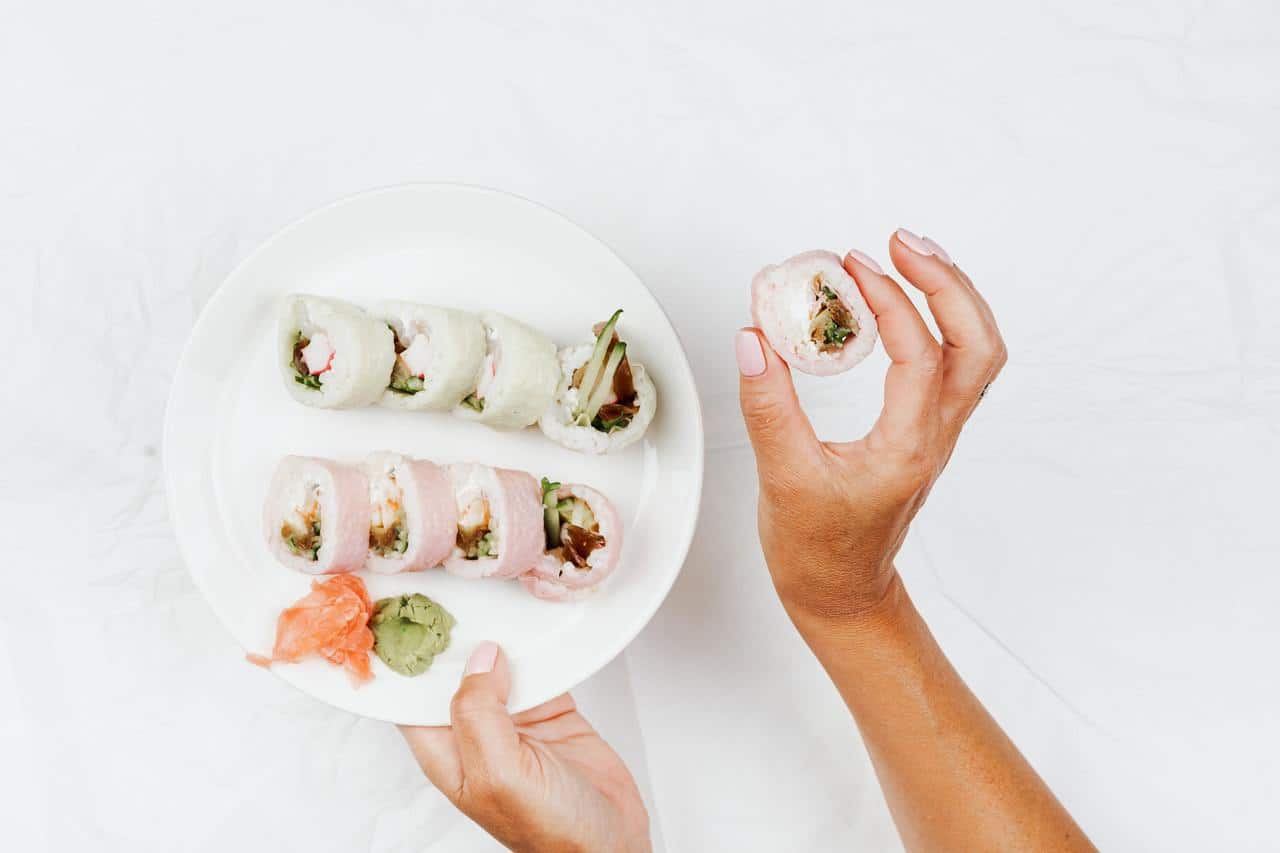
Asian cuisine is gaining more and more supporters, also those who try their hand at preparing sushi dishes at home. The famous raw fish dish consists of several ingredients, and its basis is the proper preparation of rice. If you want to learn more about this subject, you should read on, we will give you there the recipe for sushi rice!
Experienced amateurs of preparing sushi at home know that rice in this dish is essential. It cannot be any rice bought in a local store. Incorrectly selected or poorly cooked rice will have a very negative influence on the entirety of the sushi. For this dish it is best to buy rice intended for sushi. You should look for it under this name in stores selling oriental products (also on the Internet). Rice intended for sushi is short-grain rice, slightly rounded, which helps form rolls. Sushi rice also has a high amylopectin content, thanks to which its grains are quite sticky after cooking. The native Japanese call sushi rice shari, which differs from regular rice in that it is additionally acidified with vinegar. An important rule when making sushi is that under no circumstances should the kinds of rice used for the dish be mixed. Another important piece of information is that rice used for making sushi is much more expensive than traditional rice. However, saving money is not recommended in this case. Good quality, special rice will directly affect the taste of sushi.

Getting the right rice for sushi is one thing, now you have to prepare it properly before the somewhat complicated process of cooking 😉 The most important step before cooking rice is to clean it. Rice should be rinsed in cold water first in order to remove starch, which during the cooking process may turn it into a slurry unfit for rolling sushi rolls. Although sushi rice should be sticky, it cannot be in the form of the slurry mentioned above. Secondly, rice is a source of inorganic arsenic, too much of which may have very negative consequences for our health, including blood pressure problems and many heart diseases
Rice should be rinsed in cold water. After rinsing, the water should be clear, so this should be repeated several times. When the rice has been cleaned, pour cold water over it again and let it stand for about 30 minutes.
Once the rice has stood for 30 minutes in a 1:1 ratio of water, you can start cooking it. Just remember not to add salt! The recipe for sushi rice is only seemingly difficult. It is recommended to use mineral water to cook the rice, but it is not necessary. Boil the rice over medium heat until it boils, when this happens it is good to cover the rice (for example with a pot lid) and cook it in this way for about 15 minutes more. While the rice is cooking, you can prepare a marinade to sour the rice. Mix vinegar (preferably rice vinegar) with a teaspoon of salt and a teaspoon of sugar (proportions of spices can be adjusted to your liking, remember, practice makes perfect!). Heat the solution until the sugar and salt dissolve completely. The brine should only be heated, do not bring it to a boil. Then set aside to cool
When the rice is cooked, let it cool down for about 10 minutes. After this time, put the rice into a bowl (not metal!), try to spread it out as evenly as possible, this will be important for soaking the rice in the marinade. Now pour the vinegar marinade over the rice and let it cool down, fanning it gently. However, remember to mix the soaked rice as gently as possible, because disturbed grains will not stick well and your sushi rolls will not be perfect. The best way to do this is to use a wooden spoon and stir the rice from the bottom. When you’re done, cover the leavened rice with a damp cloth, preferably a cotton one, to prevent the grains from drying. When the rice has cooled down, preferably at room temperature, you can safely place it on nori. Remember that the rice should be quite cool – too hot will “melt” the nori, which will absorb its moisture and become rubbery and unfit for consumption.
Main Photo: Karolina Grabowska/Pexels